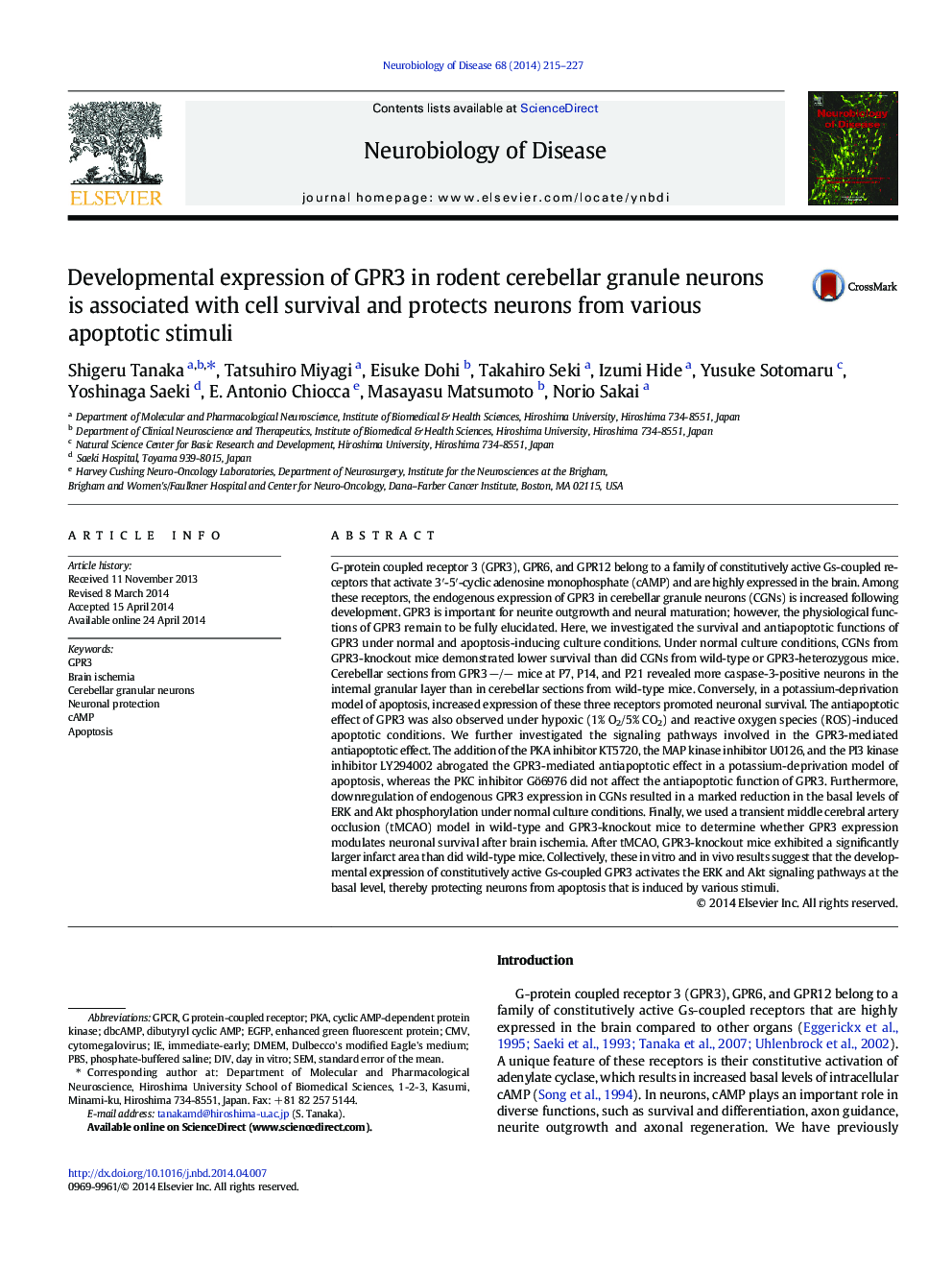| کد مقاله | کد نشریه | سال انتشار | مقاله انگلیسی | نسخه تمام متن |
|---|---|---|---|---|
| 6021963 | 1580656 | 2014 | 13 صفحه PDF | دانلود رایگان |

• G-protein coupled receptor 3 (GPR3) belongs to a family of constitutively active Gs-coupled receptors.
• We examined the survival and antiapoptotic function of GPR3 in vitro and in vivo.
• GPR3 protects CGNs from apoptosis that is induced by various stimuli.
• GPR3 knockout mice exhibited a larger infarct volume in experimental stroke model.
G-protein coupled receptor 3 (GPR3), GPR6, and GPR12 belong to a family of constitutively active Gs-coupled receptors that activate 3′-5′-cyclic adenosine monophosphate (cAMP) and are highly expressed in the brain. Among these receptors, the endogenous expression of GPR3 in cerebellar granule neurons (CGNs) is increased following development. GPR3 is important for neurite outgrowth and neural maturation; however, the physiological functions of GPR3 remain to be fully elucidated. Here, we investigated the survival and antiapoptotic functions of GPR3 under normal and apoptosis-inducing culture conditions. Under normal culture conditions, CGNs from GPR3-knockout mice demonstrated lower survival than did CGNs from wild-type or GPR3-heterozygous mice. Cerebellar sections from GPR3 −/− mice at P7, P14, and P21 revealed more caspase-3-positive neurons in the internal granular layer than in cerebellar sections from wild-type mice. Conversely, in a potassium-deprivation model of apoptosis, increased expression of these three receptors promoted neuronal survival. The antiapoptotic effect of GPR3 was also observed under hypoxic (1% O2/5% CO2) and reactive oxygen species (ROS)-induced apoptotic conditions. We further investigated the signaling pathways involved in the GPR3-mediated antiapoptotic effect. The addition of the PKA inhibitor KT5720, the MAP kinase inhibitor U0126, and the PI3 kinase inhibitor LY294002 abrogated the GPR3-mediated antiapoptotic effect in a potassium-deprivation model of apoptosis, whereas the PKC inhibitor Gö6976 did not affect the antiapoptotic function of GPR3. Furthermore, downregulation of endogenous GPR3 expression in CGNs resulted in a marked reduction in the basal levels of ERK and Akt phosphorylation under normal culture conditions. Finally, we used a transient middle cerebral artery occlusion (tMCAO) model in wild-type and GPR3-knockout mice to determine whether GPR3 expression modulates neuronal survival after brain ischemia. After tMCAO, GPR3-knockout mice exhibited a significantly larger infarct area than did wild-type mice. Collectively, these in vitro and in vivo results suggest that the developmental expression of constitutively active Gs-coupled GPR3 activates the ERK and Akt signaling pathways at the basal level, thereby protecting neurons from apoptosis that is induced by various stimuli.
Journal: Neurobiology of Disease - Volume 68, August 2014, Pages 215–227